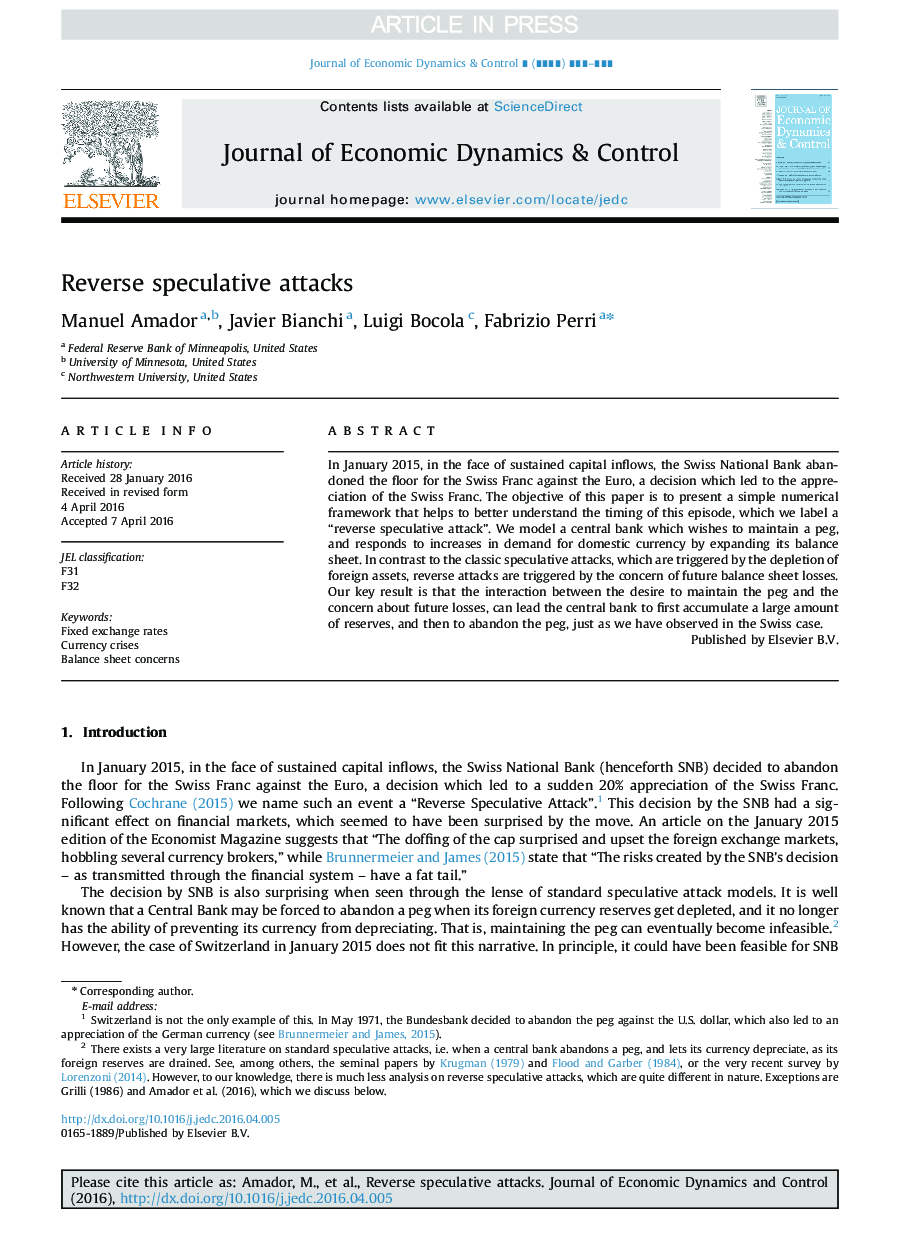| Article ID | Journal | Published Year | Pages | File Type |
|---|---|---|---|---|
| 5098130 | Journal of Economic Dynamics and Control | 2016 | 13 Pages |
Abstract
In January 2015, in the face of sustained capital inflows, the Swiss National Bank abandoned the floor for the Swiss Franc against the Euro, a decision which led to the appreciation of the Swiss Franc. The objective of this paper is to present a simple numerical framework that helps to better understand the timing of this episode, which we label a “reverse speculative attack”. We model a central bank which wishes to maintain a peg, and responds to increases in demand for domestic currency by expanding its balance sheet. In contrast to the classic speculative attacks, which are triggered by the depletion of foreign assets, reverse attacks are triggered by the concern of future balance sheet losses. Our key result is that the interaction between the desire to maintain the peg and the concern about future losses, can lead the central bank to first accumulate a large amount of reserves, and then to abandon the peg, just as we have observed in the Swiss case.
Related Topics
Physical Sciences and Engineering
Mathematics
Control and Optimization
Authors
Manuel Amador, Javier Bianchi, Luigi Bocola, Fabrizio Perri,
